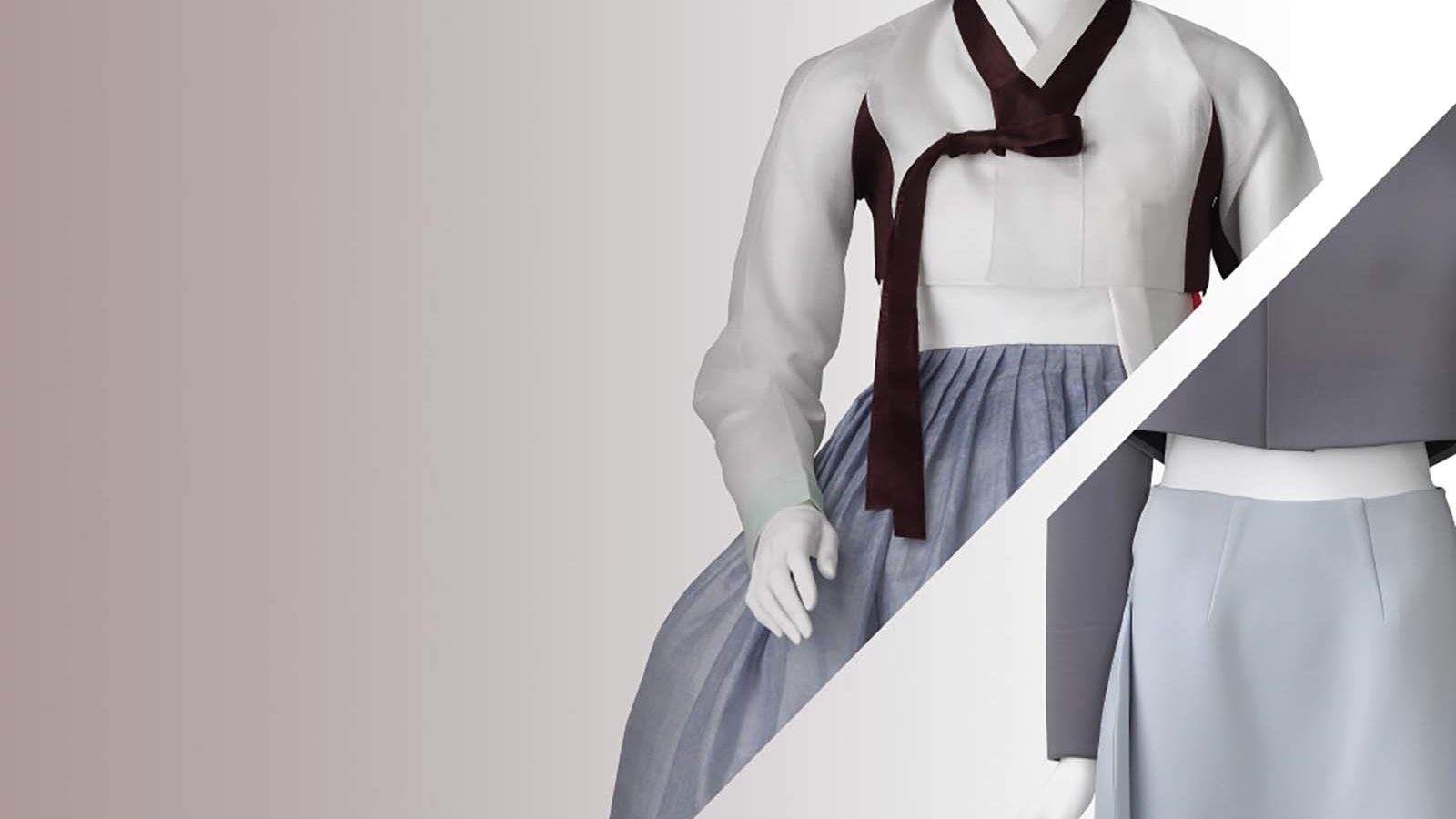In the Lee Gallery, “From Seoul to San Francisco” explores how Korean designers today are grappling with Korean traditions. The designs of Im Seonoc (b. 1961) and Jung Misun (b. 1984), representing the current generation of Seoul-based designers, showcases the challenges and excitement of reinventing, re-creating, and transforming traditions in contemporary works, producing visually stunning results.
For contemporary Korean designers Im Seonoc (b. 1962) and Jung Misun (b. 1984), reinterpretation of historical fashion is a compelling and seemingly irresistible challenge. These two Seoul-based artists collaborated with the Arumjigi Culture Keepers Foundation for a yearlong study of traditional clothing, seeking ways to adapt and reinterpret traditions for contemporary lifestyles. This gallery documents each designer’s individual and unique process through her own sketches, photographs, material samples, and finished designs.
These two artists take remarkably different approaches in creating new apparel. Im Seonoc searches for elements and trends in contemporary Western attire that she can take and apply to her own interpretation of traditional Korean clothing. For example, Im mixes Western spencer jackets or bolero forms with traditional women’s jackets (jeogori). She keeps the silhouette of the traditional Korean jacket but exchanges the collar part in the traditional jackets with a long detachable metal brooch. She applies the comfortable, voluminous form of traditional skirts to her neoprene skirts. A significant aspect of Im’s reinterpretation of the past is the flexible layering of her clothes, which embraces variety and practicality in fashion that contemporary consumers seek out. Im’s creative process is very much aligned with contemporary marketplace and environmental concerns, as she explicitly pursues “zero-waste design.”
Jung Misun has extensively researched Korean women’s history and experience, both of the past and of today. Jung is interested in the timeless characteristics and unique traits of Korean women. She has expressed her observation that “Korean women are calm but dynamic, warm but progressive, flexible but strong.” Jung’s designs reassert that traditional Korean clothing expresses and embodies these essential attributes of Korean women. However, like Im Seonoc, Jung Misun acknowledges how impractical most traditional clothing fabrics are for a modern physically active lifestyle. She exchanges high-end materials such as silk used in clothing of the past with knitted jersey as her primary fabric, while maintaining the elegant silhouette of traditional garments.

